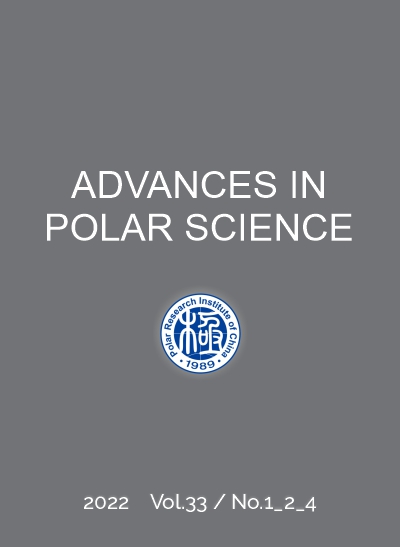Publication: Advances in Polar Science (APS). Vol. 33, No. 1, 1~13, March 2022
To download the publication please click on the download link at the bottom of the page
Author: ZHANG Wei, HAO Qiang, HE Jianfeng and PAN Jianming
DOI: 10.13679/j.advps.2021.0035
CNARC member: Polar Research Institute of China (PRIC)
Abstract: The size-fractionated composition of phytoplankton greatly influences the transfer efficiency of biomass in pelagic food chains and the biological carbon flux from surface waters to the deep sea. To better understand phytoplankton abundance and composition in polynya, ice zone, and open ocean regions of the Amundsen Sea Sector of the Southern Ocean (110°W–150°W), its size-fractionated distribution and vertical structure are reported for January to February 2020. Vertical integrated (0–200 m) chlorophyll (Chl) a concentrations within Amundsen polynya regions are significantly higher than those within ice zone (t test, p < 0.01) and open ocean (t test, p < 0.01) regions, averaging 372.3 ± 189.0, 146.2 ± 152.1, and 49.0 ± 20.8 mg·m−2, respectively. High Chl is associated with shallow mixed-layer depths and near-shelf regions, especially at the southern ends of 112°W and 145°W. Netplankton (> 20 μm) contribute 60% of the total Chl in Amundsen polynya and sea ice areas, and form subsurface chlorophyll maxima (SCM) above the pycnocline in the upper water column, probably because of diatom blooms. Net-, nano-, and picoplankton comprise 39%, 32%, and 29% of total Chl in open ocean stations, respectively. The open-ocean SCM migrates deeper and is below the pycnocline. The Amundsen Sea SCM is moderately, positively correlated with the euphotic zone depth and moderately, negatively correlated with column-integrated net- and nanoplankton Chl.
Key words: size-fractionated phytoplankton, chlorophyll a, subsurface chlorophyll maxima, polynya, Amundsen Sea


